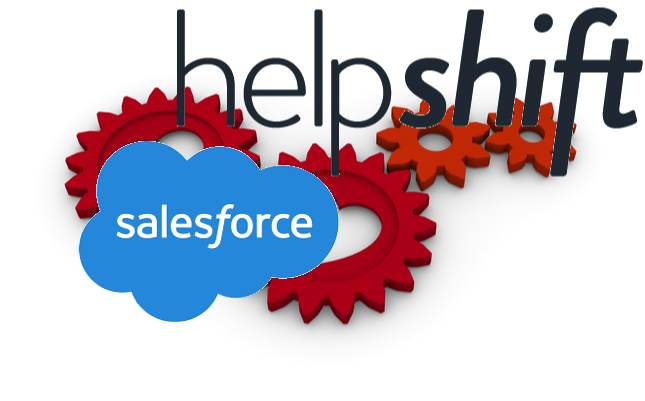
by twieberneit | Aug 23, 2020 | Analysis, Blog |
The News Intercom is a conversational relationship platform that helps businesses build better customer relationships through personalized, messenger based experiences. It’s the only platform that delivers conversational experiences across the customer journey, with solutions for conversational marketing, conversational customer engagement and conversational support. Intercom is bringing a messenger-first experience to all business-to-customer communication, powering 500 million conversations per month and connecting 4 billion unique end users worldwide across its more than 30,000 paying customers, including Atlassian, Sotheby’s and New Relic. On August 12, 2020 Intercom launched a new product release with more than twenty functional enhancement that are intended to ‘supercharge customer support’. The company says that it is its biggest ever launch and targeted at ensuring that its customers “can provide prompt, personal support without sacrificing power or efficiency”. The twenty plus new features in this release cover enhancements across Messenger, Inbox and reporting. As part of this, there are new bots that can be used in the messenger, new data attributes that conversations can be tagged with and new rules and assignment features that enable deeper automation of conversations. This gets augmented by additional view capabilities in the support inbox that help getting better overview and by offering more task bots to the messenger that help providing a high customer experience while automating jobs. Additionally, Intercom improved its reporting capabilities by adding three dashboards covering conversations, effectiveness, and team resolutions with twelve new metrics plus improved filtering capabilities. Lastly, Intercom changed the side-bar navigation by providing clearer icons, changing their sequence and renaming one of the core sections, Platform, to Contacts. This has the goal of improving...

by twieberneit | Sep 12, 2017 | Analysis, Blog |
The News On September 7, 2017 Helpshift announced the appointment of a new CEO in a blog post. Salesforce veteran Linda Crawford, with a tenure in the CRM arena that stretches back to 1996, took over the role, being the successor of co-founder Abinash Tripathy. Before, she held various positions at Salesforce, Rivermine, and Siebel. Most recently she held the position of a Chief Customer Officer at Optimizely. This track record certainly qualifies her to have a go at growing an interesting company to the next level. Helpshift itself is the company that created the mobile in app support market back in 2011 and, so far, has a keen focus on this area under the leadership of Abinash. Investors include Cisco, Intel, Microsoft, and Salesforce. Both, Microsoft and Salesforce, have been lead investors of the Series B financing round in June 2016. The Bigger Picture The customer service center market is extremely crowded and contested. Helpshift itself has a strong product and a good customer base, originating from the gaming industry but also running the customer service technology behind Microsoft Outlook Mobile. The company is targeting bigger accounts and is already amongst the ranks of Salesforce partners, having a deep integration. However, the overall market is turning into a platform play, which will be dominated by two or three business platforms for bigger companies, and maybe a handful more that cover SMBs. The platform companies are also providing strong business applications, including customer service, even in-app service. And then there are companies that build multi channel customer service solutions on these platforms, too. Are they as good as Helpshift?...

by twieberneit | Sep 1, 2017 | Blog |
A few weeks ago I wrote an article about customer service in a world of ambient computing. This article looked at customer service from a customer’s point of view. In it I described how I see customer service getting humanized again by leveraging the advances in AI technologies like Natural Language Processing, speech-to-text- and text-to-speech generation along with intent determination. Leveraging these technologies customer service will turn into a conversation and it won’t matter anymore whether service is delivered by a bot or by a human. For the customer it will all appear to be the same. Instead of FAQs or web searches, bots will be the first line of support and escalate a problem to humans if they cannot solve it on their own. The obvious question is whether there will be an impact on the customer service center? And it probably does. Call centers, and with it the service agents as well as their managers, already now are under intense pressure to deliver, and to deliver more efficiently. With the increasing use of call deflection technologies like FAQs and communities there is a trend for the incidents facing the agents becoming more challenging. For example Helpshift states that already with its technology it is able to deflect about 90% of all incidents, which are solved via the native in-app FAQ that is delivered by the them. This statement basically says that the support staff is basically relieved of dealing with simple matters but has the chance to take up the more challenging ones. Still, in a world of ambient computing any given app can have hundreds of...

by twieberneit | Aug 11, 2017 | Blog |
A few weeks ago I wrote an article about customer service in a world of ambient computing. This article looked at customer service from a customer’s point of view. In it I described how I see customer service getting humanized again by leveraging the advances in AI technologies like Natural Language Processing, speech-to-text- and text-to-speech generation along with intent determination. Leveraging these technologies customer service will turn into a conversation and it won’t matter anymore whether service is delivered by a bot or by a human. For the customer it will all appear to be the same. Instead of FAQs or web searches, bots will be the first line of support and escalate a problem to humans if they cannot solve it on their own. The obvious question is whether there will be an impact on the customer service center? And it probably does. Call centers, and with it the service agents as well as their managers, already now are under intense pressure to deliver, and to deliver more efficiently. With the increasing use of call deflection technologies like FAQs and communities there is a trend for the incidents facing the agents becoming more challenging. For example Helpshift states that already with its technology it is able to deflect about 90% of all incidents, which are solved via the native in-app FAQ that is delivered by the them. This statement basically says that the support staff is basically relieved of dealing with simple matters but has the chance to take up the more challenging ones. Still, in a world of ambient computing any given app can have hundreds of...

by twieberneit | Jun 29, 2017 | Analysis, Blog |
Earlier in June I had the opportunity to talk to Barry Coleman, CTO of Agent.ai, an about 2-year-old company at the time of writing this. The company spun off of manage.com, a very different business that enable the delivery of in-app advertisements. In order to support this mission more and more, first internal, then external support capabilities were needed. At first they built chat functionality for internal and for support purposes. Then there was the question of how to efficiently provide 24/7 support. This resulted in giving birth to a bot structure that can help customer service agents in an assisting mode, called co-pilot mode, and an autonomous mode, called autopilot. And it gave birth to Agent.ai. Agent.ai’s mission is to enable “exceptional customer service for all”. While this mission is not particularly unique, their approach is. First, Agent.ai has built its customer service software around a machine-learning platform. Second, the company provides their solution without asking their clients for a huge upfront investment or the need to have of AI-proficient developers in house. Third, they wanted to avoid the pitfall of inflated expectations. With AI and machine learning being very hyped topics at the moment, this is a very valid concern. Going backwards through the objectives, Agent.ai opted for offering very specialized bots first. As there is no general AI yet, this is pretty straightforward. Specific, tightly framed topics are far easier to support with AI and exposed by bots than broader bodies of knowledge. For example, specializations include the handling of order inquiries or of support call closure surveys. The second objective was achieved by doing all...






